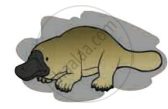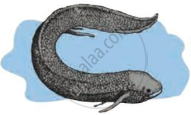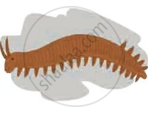Advertisements
Advertisements
प्रश्न
Give two examples of vestigial organs in human beings and plants.
उत्तर
Vestigial organs are remains of a structure that were functional in some ancestor but is no longer functional in present body.
Some examples of such organs in humans are:
(a) Appendix: The appendix is a small projection of the side of the large intestine near the cecum. It looks kind of like a tail and is found near where the small and large intestines meet. No one knows the actual original function of the appendix.
(b) The tail bone: Attached to the bottom of the sacrum is the coccyx or tailbone. This small, bony projection seems to be a leftover structure of primate evolution. It is believed that human ancestors once had tails and lived in trees. The coccyx would be where the tail was attached to the skeleton.
Some examples of such organs in plants are:
(1) Sexual organs of dandelions: The common dandelion reproduces asexually through a process known as apomixis. However, they still have all of the functional parts that most flowering plants use to reproduce sexually, namely the stamen and pistil.
(2) Grass often has small, undeveloped structures that strongly resemble those of flowering plants.
APPEARS IN
संबंधित प्रश्न
State the connecting links between Peripatus with Annelida and Arthopoda.
(a) Select the analogous structures from the combination given below:
(i) Forelimbs of whales and bats
(ii) Eyes of octopus and mammals
(iii) Tuber of sweet potato and potato
(iv) Tuber of Bougainvillea and tendrils of Cucurbita
(b) State the kind of evolution they represent
Given below is the list of vegetables available in the market. Select from these the two vegetables having homologous structures:
Potato, sweet potato, ginger, radish, tomato, carrot, okra (Lady’s finger)
(A) Potato and sweet potato
(B) Radish and carrot
(C) Okra and sweet potato
(D) Potato and tomato
If you are asked to select a group of two vegetables, out of the following, having homologous structures which one would you select?
(a) Carrot and radish
(b) Potato and sweet potato
(c) Potato and tomato
(d) Lady finger and potato
Can the wing of a butterfly and the wing of a bat be considered homologous organs? Why or why not?
Attempt giving a clear definition of the term species.
Give the importance of fossil in support of organic evolution
Name any two temporary embryonic structures in vertebrates which provide evidence for evolution.
How do homologous organs help in providing evidence for organic evolution?
Human tailbone is a vestigial organ. Explain.
The presence of which of the following types of organs in two organisms indicates that they are derived from the same ancestor?
(a) analogous organs
(b) respiratory organs
(c) digestive organs
(d) homologous organs
The wings of a housefly and the wings of a sparrow are an example of :
(a) analogous organs
(b) vestigial organs
(c) respiratory organs
(d) homologous organs
X, Y, and Z are three animals. The animal X can fly but animal Y can only run on ground or walls. The forelimbs of animals X and Y have the same basic design but they are used for different purposes such as flying and running respectively. The animal Z became extinct an long time ago. The study of fossils of Z tells us that it had some features like those of X and some like those of Y. In fact, Z is said to form a connecting link in the evolutionary chain of X and Y.
(a) What could the animals X, Y and Z be?
(b) What name is given to the forelimbs like those of X and Y which have the same basic design but different functions?
(c) Name one feature in which Z resembled X.
(d) Name one feature in which Z resembled Y.
(e) Which is the correct evolutionary chain involving X, Y and Z : X → Z → Y or Y → Z → X?
The organs P and Q of two animals have different structures but similar functions. On the other hand, the two organs R and S of two other animals have the same basic structure but different functions.
(a) What are the organs like P and Q known as?
(b) Name the organs like P and Q. Also name the animals which have such organs.
(c) What are the organs like R and S called?
(d) Name the organs like R and S. Also name the animals which have such organs.
_______ is a connecting link between Annelida and Arthropoda.
“Appearance of melanised moths post-industrialisation in England is a classic example of evolution by natural selection.” Explain.
What do you mean by vestigial structures? Name four vestigial organs found in man.
Differentiate between connecting links and the missing links.
Very short answer question.
What are homologous organs?
Short answer question.
Give the significance of fossils.
Find an odd one out.
Find an odd one out.
Appendix : vestigial organ : : Peripatus : ____________
The decaying process of C-14 occurs continuously in dead organisms only.
Write the answers to the questions by observing the figure below.
 |
 |
 |
| (a) | (b) | (c) |
- Write the name of the animal ‘(a)’ in the figure.
- Write the name of the animal ‘(b)’ in the figure.
- Write the name of the animal ‘(c)’ in the figure.
- Which evolutionary evidence is illustrated by this figure?
- Write the definition of that evidence for evolution.
A human hand, a front leg of a cat, a front flipper of a whale and a bat’s wing look dissimilar and adapted for different functions. What is the name given to these organs?
Homologous organs and vestigial organs are examples of ______ type of evidence in evolution.
The fossil remains of Archaeopteryx is a connecting link between ______
Tendons and ligaments are examples of ______.
The process of mating of individuals, which are more closing related than the average of the population to which they belong is called ______.
Analogous organs arise due to ______.
What are we referring to? When we say 'simple organisms' or 'complex organisms'.
The evolutionary story of moths in England during industrialisation reveals, that 'evolution is apparently reversible'. Clarify this statement.
Explain divergent evolution in detail. What is the driving force behind it?
Explain natural selection with the example of industrial melanism.
Write avian characters of Archaeopteryx.
Industrial melanism in England after 1850 is an excellent example of Natural selection. Explain how?
